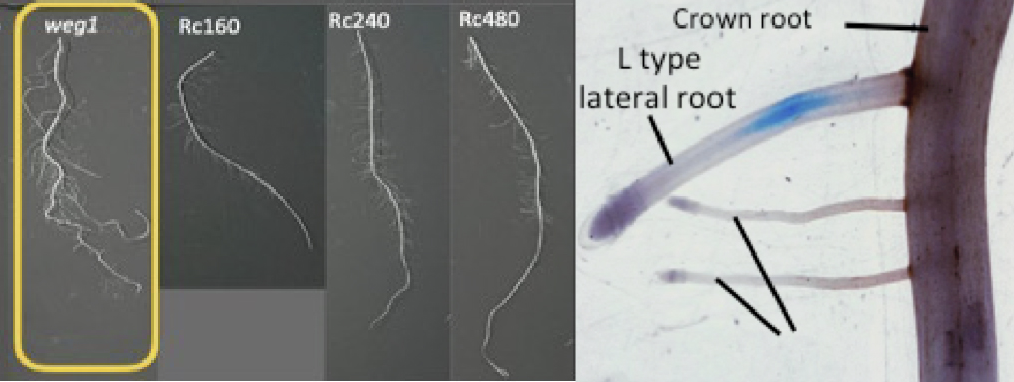
The DOST-PCAARRD team at a screenhouse in PhilRice with the the experimental set-up for growing root samples. (Image credit: CRD, DOST-PCAARRD)
Bracing for the threats of drought in the country, the initial findings of an ongoing project provide new insights to improve the root systems of rice that can enhance its adaptability to water stress conditions.
Funded by the Philippine Council for Agriculture, Aquatic and Natural Resources Research and Development of the Department of Science and Technology (DOST-PCAARRD), the project, "Molecular Mechanisms of Root System Formation for Genetic Improvement of Rice Adapted to Water Stress Conditions," is being implemented by the Crop Biotechnology Center of the Department of Agriculture (DA-CBC) at the Philippine Rice Research Institute (PhilRice) Central Experiment Station.
Led by Dr. Roel R. Suralta and assisted by DOST Balik Scientist Nonawin B. Lucob-Agustin, the project explores the genetic aspects of rice root development, specifically the L-type lateral roots, which play an important role in improving productivity during water-stressed conditions.
L-type lateral roots spread horizontally, helping plants absorb water and nutrients better, provide stability, and adapt to different soils. Despite their significance, limited information exists on the molecular mechanisms influencing L-type roots.

Comparison of root samples of rice varieties and weg1 mutant line (left) and close-up of lateral root formation (right). (Image credit: PhilRice)
According to Dr. Lucob-Agustin, the presence of the wavy root elongation root growth 1 (weg1) gene is identified as a factor in promoting L-type lateral roots.
Based on their initial observation, weg1 mutants showed higher root systems and shoot dry matter production. Using a molecular marker for this gene, the team identified promising lines with highly-branched root systems and a quantitative trait loci (QTL) associated with lateral root density under rewatering conditions.
To hasten the development of new rice varieties with improved L-type roots, the project team developed a screening protocol combining hydroponics and modified rapid generation advancement (RGA) technique.

Optimized hydroponics condition (left) and rapid generation advancement (RGA) set-up for early root screening of breeding lines. (Image credit: PhilRice)
These findings are expected to contribute to the rice breeding programs in the country for the development of new drought-tolerant varieties.
The team also conducted a training in root gene expression/epigenetics assays and molecular tools as part of its target outputs.
The project also collaborated with Central Luzon State University (CLSU) and forged a Material Transfer Agreement (MTA)/Memorandum of Understanding (MOU) with Nagoya University in Japan.
Dr. Glenn B. Gregorio, Director of the Southeast Asian Regional Center for Graduate Study and Research in Agriculture (SEARCA), served as the science and technology (S&T) consultant during the project’s annual review and evaluation organized by DOST-PCAARRD’s Crops Research Division (CRD).
The review was followed by a field monitoring visit at the project’s experimental sites, along with the PhilRice Genebank, one of the institution's initiatives to collect and conserve rice genetic resources in the Philippines, in the PhilRice Central Experiment Station, Science City of Muñoz, Nueva Ecija.

